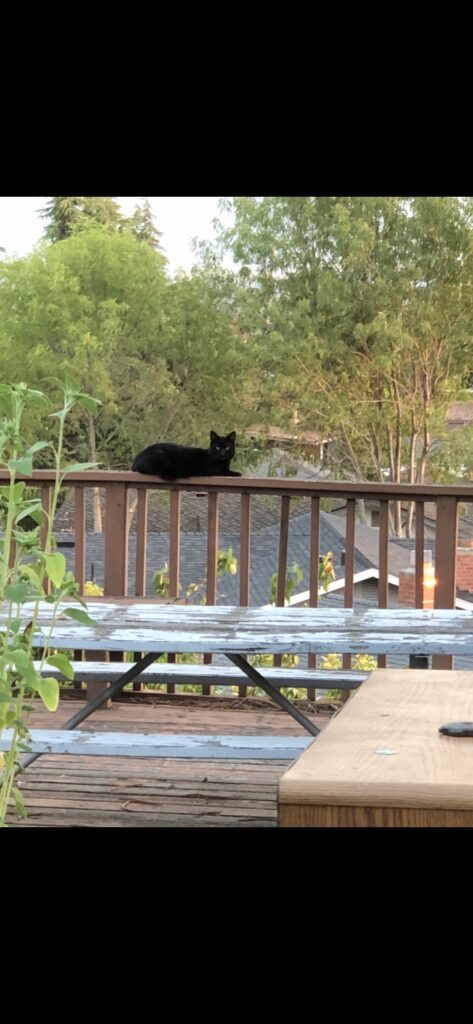The landscape evaluation I decided to ‘read’ is the backyard of a family home. The house is nestled in the foothills of East San Jose a half-mile off the main road Alum Rock Avenue, otherwise known as California State Route 130. The house is located in a cul-de-sac making for a quiet, tranquil neighborhood. My mother and fathered purchased the home in 2000 as a real estate investment, and to provide housing for my maternal grandfather Guadalupe Rodriguez. He lived in the house for the remainder of his life (nearly twenty years) significantly contributing to the landscape of the home by planting a wide variety of greenery. Prior to my family’s ownership of the house, the Unrue family were the owners—my family and I do not recall the first names of the Unrues. Their initial development of the landscape still predominantly characterizes the features of the back and front yards.
The backyard is a downward sloped hill and at the top of the hill where the house sits, one can experience an excellent view of downtown and south San Jose. To enhance this view, the Unrues built a viewing deck and installed a patio space made of grey and pebbled concrete. In the concrete, they left behind several mementos including what appears to be a railway spike, horseshoe, an adult and child handprint, and their family name etched into the cement, one dated 1975. The Unrues built a wooden stairway that descends down the hill and tiered the hill into four levels, as well as built a fence at the top of the hill as a barrier. They also planted several fruit trees, and numerous bushes in the backyard, especially on the tiered sections. At the top of the hill they planted a mulberry tree that still contributes to the aesthetics of the landscape today.

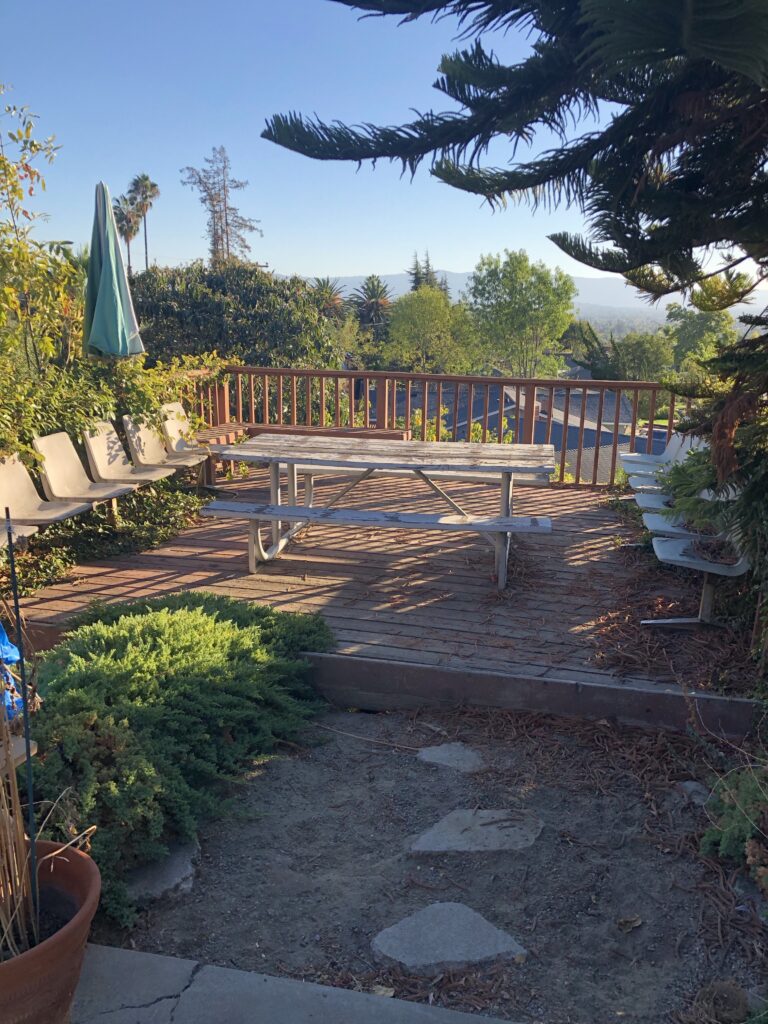
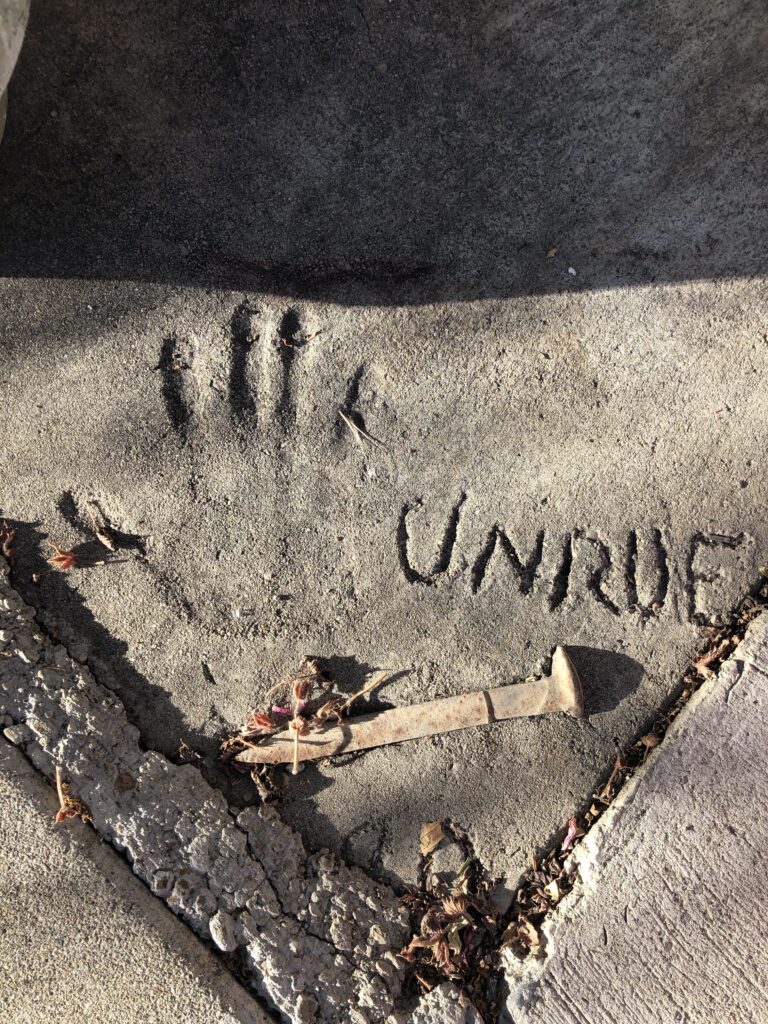
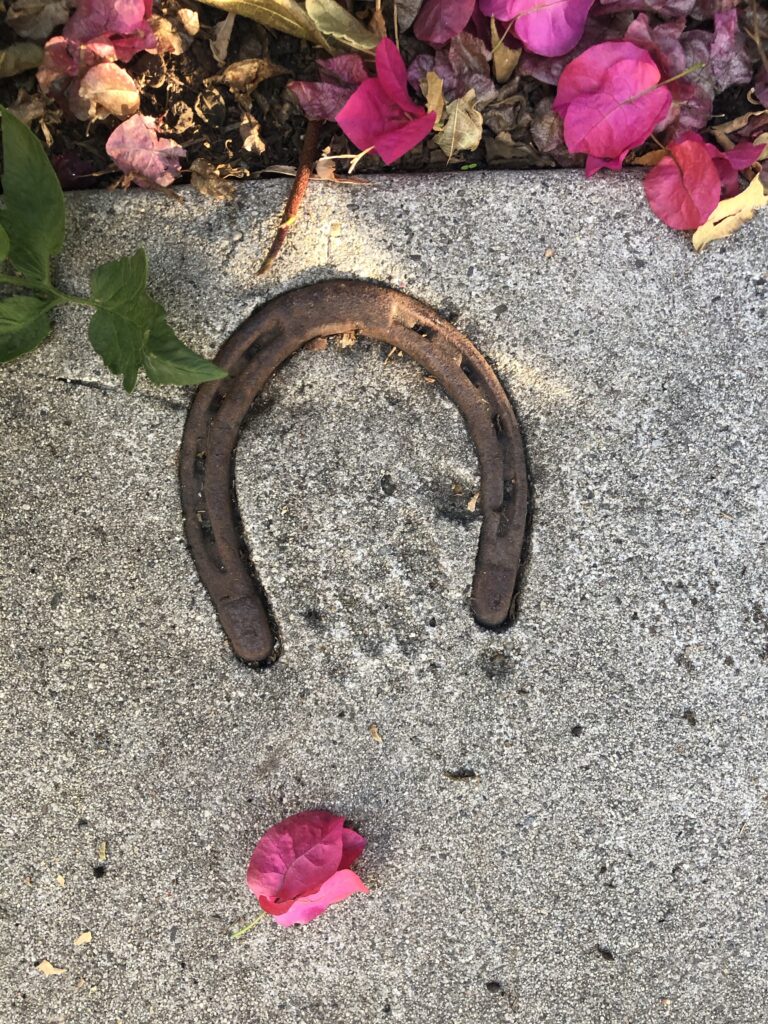
When Guadalupe moved in, he contributed to the landscape of the backyard primarily by planting more greenery—a cactus and rose bushes from his hometown of Yahualica, Mexico as well as cherry, peach, and apricot trees. He also planted two Chinese maple trees, a pine tree, a hibiscus tree, and oregano and mint plants.
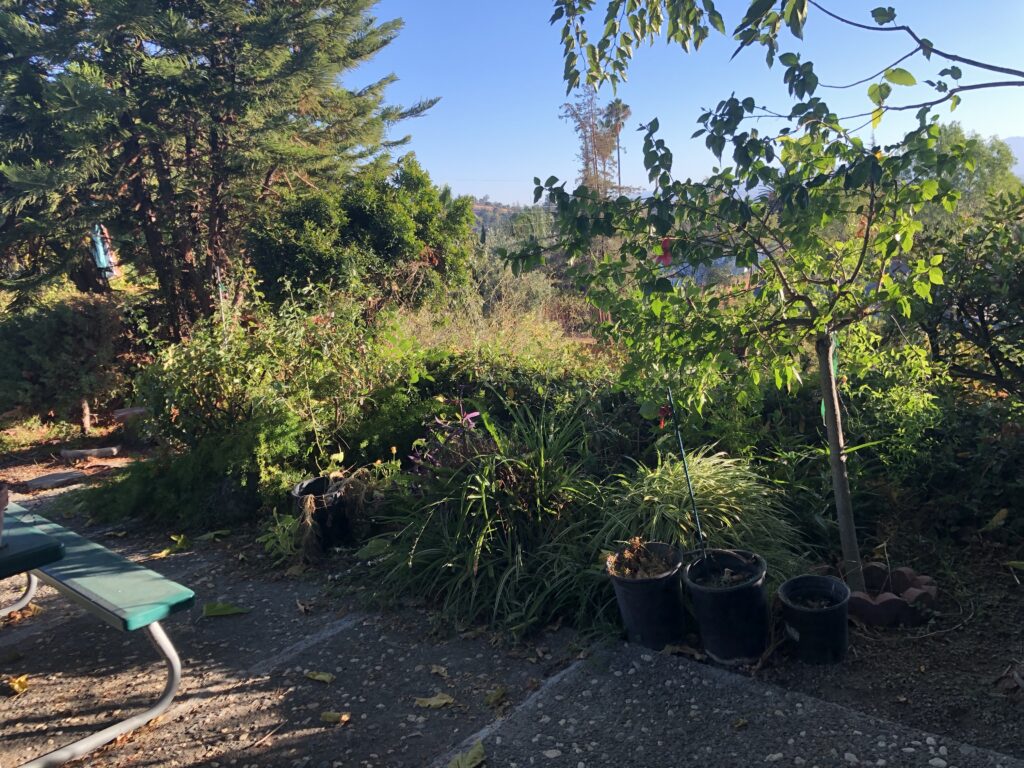
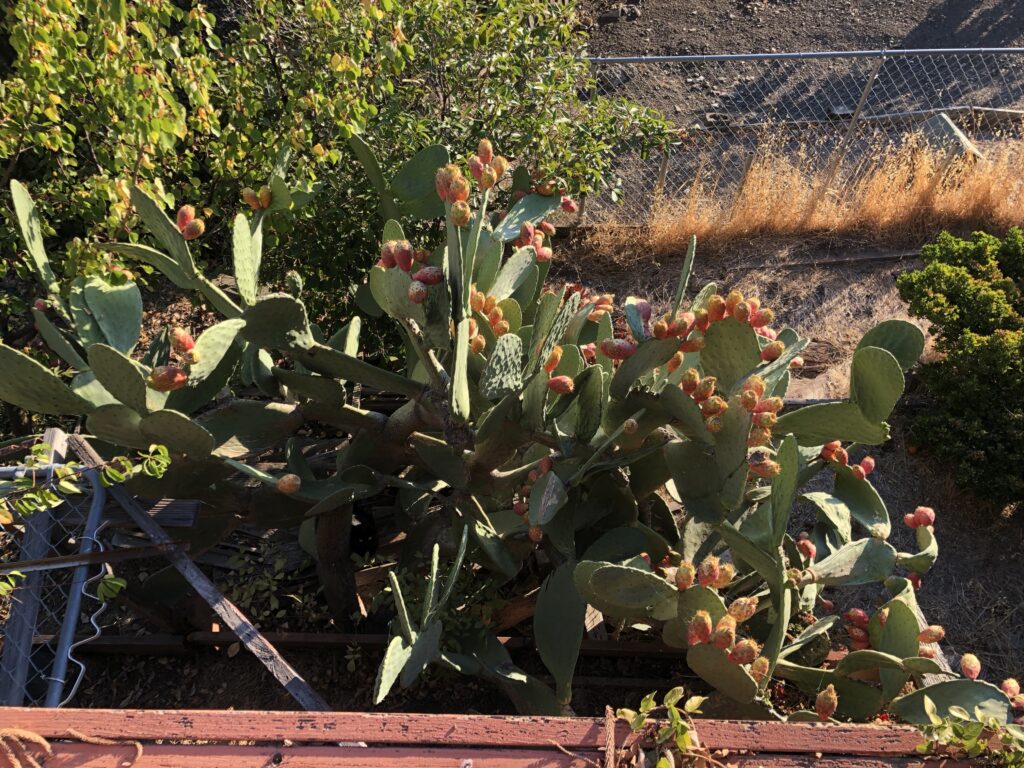
During his life, the backyard was used for family social gatherings such as birthday parties. They would be large gatherings consisting of immediate and extended family (mostly cousins). These events were excellent environments to learn about family history or stories about the town of Yahualica where the maternal side of my family is from.
Over time, the original structures built by the Unrue’s deteriorated. The fence that acted as a barrier between the top of the hill and the garden became overgrown with ivy and collapsed. The wooden stairway has begun to collapse but is still usable, and the erosion of the hill has pushed the tiered sections to a slant. Ivy has started to grow on a now ramshackle viewing deck. In addition, several self-planted seeds have taken root growing a lemon tree and several unidentifiable deciduous trees. Due to lack of care, time, and money most of the greenery has become overgrown.
The year after my grandfather passed away, I moved into the home with my fiancée. As the newest residents we also contributed to the landscape of the backyard by planting more plants, caring for the plants my grandfather left us, and managing the overgrowth. I significantly cut back tree branches and bushes, because the overgrowth obscured the view of the city. My fiancée and I planted an herb garden, tomato plant, zucchini plant, sunflowers, and mint. Since we moved in two months before the COVID-19 pandemic, our gatherings have been small and limited. We hosted a Fourth of July barbeque for my immediate family and had only a small number of friends over for a visit. However, once the pandemic passes, we intend on hosting more gatherings so other can enjoy the landscape of our living space and (hopefully) our hospitality.
